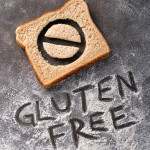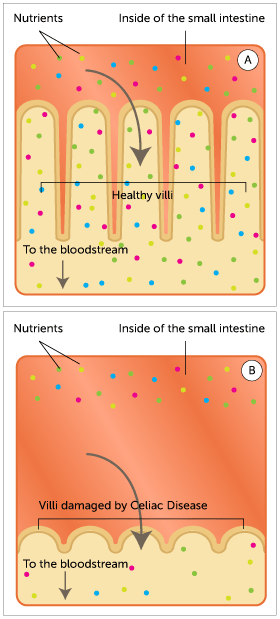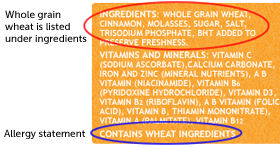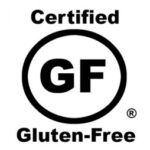Gluten-Free Diet: All Guides
Gluten-Free Diet: General Information
- Gluten is a protein found in certain grains such as wheat, barley, and rye.
- Anyone with celiac diseasemust follow a gluten-free diet.
- Read the ingredient list on the food label to see if a product is gluten-free.

You’ve probably heard about the gluten-free diet on social media or from friends or family – or just from seeing products advertised as “gluten free”. Despite what some people may think, the gluten–free diet is not a weight loss diet. The gluten–free diet is medically necessary for people who have been diagnosed with celiac disease, an autoimmune disorder that’s triggered by gluten and is prescribed by a health care provider. Those with non-celiac gluten sensitivity will also have been recommended to follow a gluten-free diet by their health care provider. For people with celiac disease, a gluten–free diet must be followed to heal the body and reduce signs and symptoms of the disease. Following a gluten–free diet can seem overwhelming at first, but it’s really not as hard as it might seem. If your doctor has told you to eat only gluten-free foods, once you learn which foods to avoid and which foods you can eat comfortably, you’ll feel much better
What is gluten?
Gluten is a protein complex found in the grains wheat, barley, and rye. Flours made from these grains are commonly used to make foods such as breads, cereals, pasta, pizza, and baked goods. The gluten gives these foods an elastic texture and helps provide the structure.
Why would someone need to follow a gluten–free diet?
Anyone with celiac disease should follow a strict gluten–free diet to avoid causing long term damage to the small intestine (see image) as well as an array of symptoms. If your health care provider tells you that you have gluten sensitivity you should also follow a gluten-free diet in order to avoid any symptoms you may have.

A. In a healthy person, nutrients get absorbed by villi in the small intestine and go into the bloodstream. B. In a person with Celiac Disease, the villi have been damaged by inflammation, so fewer nutrients pass into the bloodstream.
What is celiac disease?
Celiac disease is an autoimmune disorder that is triggered in some people when gluten-containing foods are eaten. An autoimmune disorder is one in which the body’s immune system attacks an organ. When a person with celiac disease eats a food with gluten in it, the immune system launches an attack against the small intestine which damages the lining of the intestine. Noticeable symptoms of celiac disease are diarrhea, abdominal (stomach) pain, unintentional weight loss, anemia, poor appetite, irregular periods, delayed growth, and delayed onset of puberty. There may also be other noticeable symptoms such as a skin rash, headaches, and fatigue. Some people have almost no noticeable symptoms, but their health care provider may detect a nutritional deficiency (such as low vitamin D levels) or low bone mineral density.
Gluten is harmful for someone with celiac disease. Following a gluten-free diet heals the small intestine, and usually eventually causes symptoms of celiac disease to go away. Following a gluten-free diet may require a lot of work at first, but soon will seem more automatic. Instead of feeling limited, you will see that there are tons of delicious (gluten-free) options for you!
What is gluten sensitivity?
Gluten sensitivity, also called non-celiac gluten sensitivity or gluten intolerance, can be diagnosed if a person doesn’t have celiac disease or a wheat allergy (both of these tests are negative) but they have some similar symptoms to those conditions and they feel better when they are on a gluten-free diet. While someone with gluten sensitivity will have similar symptoms as a person with celiac disease, they do not have the same intestinal damage. It’s unclear whether people with gluten sensitivity need to be as strict about adhering to a gluten-free diet. There is no definitive test for gluten intolerance.
I feel better when I don’t eat gluten – do I need an official diagnosis from my health care provider?
If you think that you might have celiac disease, an allergy to wheat, or gluten intolerance, you should consult with a medical professional rather than simply starting to avoid gluten. Your health care provider will likely want to run some tests while you are still eating gluten in order to give you the best medical care.
Things to keep in mind…
A gluten-free diet isn’t always a healthy diet. Some people who follow a gluten-free diet may not get enough of certain nutrients, vitamins, and minerals in their diet such as fiber, iron, and calcium. Also, some gluten-free products can be high in calories and sugar. If you are diagnosed with celiac disease, it’s best to meet with a dietitian to develop a healthy, balanced meal plan and to identify if any vitamin or mineral supplements are necessary. Do not follow a strict gluten-free diet if not medically necessary.
There are many hidden sources of gluten both in food and non-food products. Gluten could be in foods that you wouldn’t expect –such as candy, sauces, soups, and marinades. Be sure to check products such as toothpaste, mouthwash, lipstick/gloss, glues, play dough, supplements, vitamins, and both prescription and over the counter medications. Check with your pharmacist and ask your health care provider to write, “Medication must be gluten–free” on any prescriptions. Many soaps, shampoos, and lotions contain wheat or oats. While gluten cannot be absorbed through the skin, it is important to be aware of this – especially if you have a habit of biting your finger nails or touching food after putting on lotion.
Gluten Free Diet: Foods to Avoid vs. Safe Foods

What foods do I avoid on the gluten–free diet?
Following a gluten–free diet means you should remove all foods that have – or could have – gluten from your diet. Foods that contain gluten should never be eaten by anyone with celiac disease.
Ways to eliminate gluten-containing food from your diet:
- Remove grains that contain gluten from your diet. You shouldn’t eat any food that contains wheat, barley, or rye. Keep in mind that wheat has many forms. Avoid products that include bulgur, durum, graham, kamut, spelt, farro and semolina. These are all forms of wheat!
- Avoid all gluten-containing foods such as bagels, breads, cakes, candy, cereals, crackers, cookies, dressing, flour tortillas, gravy, ice cream cones, licorice, malts, rolls, pretzels, pasta, pizza, pancakes, sauces, stuffing, soy sauce, veggie burgers, vegetarian bacon/vegetarian chicken patties (many vegetarian meat substitute products contain gluten) and waffles. Please note this is NOT a complete list.Fortunately, gluten-free varieties are available for most of these foods.
- Look for “hidden” sources of gluten. Avoid foods that list gluten-containing ingredients such as ale, barley, beer, bleached flour, bran, bread flour, brewer’s yeast, brown flour, brown rice syrup (unless the food is labeled gluten free), bulgur, couscous, dextrin (unless the source is gluten-free), durum, farina, farro, hydrolyzed vegetable (wheat) protein, gluten flour, graham flour, granary flour, groats, harina, kamut, malt, malt extract, malt syrup, malt vinegar, matzo, modified starch (unless the source is gluten-free), rye, orzo, seitan, semolina, self-rising flour, spelt, smoke flavoring, soy sauce, triticale, wheat germ, wheat and white flour, whole meal flour, and vegetable gum.
What’s important to know about barley?
Barley contains gluten and is frequently used to make malt. As a general rule, you should avoid natural or malt flavorings. If a food has “natural” or “malt” flavorings in the ingredient list, contact the company to see if these flavorings came from a non–gluten source.
Do I need to avoid oats?
It’s best to check with your health care provider to see if you can eat traditional oats or if you need to look for certified gluten-free oats. To find out if your favorite brand of oatmeal is gluten-free, check the package each time you purchase them. You can also call the company or check the brand’s website. Some brands, such as Bob’s Redmill, Glutenfreeda, and GF Harvest make oatmeal that is certified gluten-free. When eating out or when in doubt, avoid oats and oat-containing cereals and breads since oats may be cross-contaminated with wheat.
What foods are safe to enjoy on the gluten–free diet?
There are lots of delicious foods to enjoy! Many foods are naturally gluten-free, including milk, butter, cheese, fruits and vegetables, fresh meats, fish, poultry, eggs, beans, nuts, seeds, corn, quinoa, and rice. While most breads, pastas, cereals, and baked goods are made with grains and flours containing gluten, there are many grains and flours that are naturally gluten-free – and many products on the market made from these grains and flours. Think of these grains, and products made with them, as safe foods – in other words, safe to eat on the gluten-free diet!
Gluten-free grains
- Amaranth
- Arrowroot
- Bean Flours/pasta (such as garbanzo, black bean, or lentil)
- Brown Rice Flour
- Buckwheat
- Casava Flour
- Carob Flour
- Corn (Maize), Corn Flour
- Corn Meal
- Cornstarch
- Kasha (roasted buckwheat kernels)
- Kuzu Root Starch
- Masa Flour
- Millet
- Montina Flour
- Nut Flour (almond, pecan)
- Potato, Potato Flour
- Pea/lentil Flour
- Potato Starch
- Quinoa, Quinoa Flakes
- Rice bran
- Rice (brown, white, wild)
- Sago Flour
- Sorghum Flour
- Tapioca Flour, Tapioca Starch
- Taro Root
- Teff, Teff Flour
- Yam/Sweet Potato Flour
How can I tell if a food is gluten–free?
A product labeled “gluten-free”, “no gluten” or “without gluten” is the fastest and easiest way to spot a gluten-free product. Manufactures can use these terms if they comply with the FDA rule of “gluten-free”. However, the FDA is unable to check every single label and sometimes mistakes are made so check the ingredient list as well if there is a “gluten-free” claim on the label.
Another way to tell if a product contains gluten is to read the allergen statement on packaged foods. The FDA food allergen labeling law requires food companies to label all foods that have wheat or contain wheat products. The allergen statement is found at the end of the ingredient list on packaged foods; if it says “contains wheat”, this means it has gluten and it’s unsafe.
The food labeling law does NOT apply to barley, rye, or oats. This means if the allergen statement does not include wheat, you need to continue reading through the ingredient list for the other sources of gluten described above. If you don’t see any of those words in the ingredient list, then the food is most likely a safe food.
In the sample ingredient label below, the ingredients are circled in red and the allergen statement is circled in blue. This food, which contains whole grain wheat, is not safe.

There is also a symbol that may appear on packaging of gluten free

foods, which the Gluten Intolerance Group has deemed “Certified Gluten Free.” This symbol represents that the food manufacturer has applied for and been granted certification of the product’s status of gluten-free, by submitting test results showing that there is no gluten contained in the product.
You might notice that some food labels have the following statements and are unsure whether or not you should eat them. When in doubt, ask your dietitian or medical provider, but in general:
- “May contain traces of wheat” – AVOID
- “Made on shared equipment with wheat ingredients” – AVOID
- “Manufactured in a facility that also processes wheat ingredients” – OK
Gluten-Free Diet: Eating at Home vs. Away

There are two basic ways to make gluten–free foods at home. Some families choose to make their kitchen completely gluten–free by throwing out all gluten containing foods and sanitizing or purchasing new cooking equipment and utensils.
Other families choose to keep gluten containing products in their kitchen but they have strict rules about storing and cooking foods that are gluten–free. If you and your family decide to keep foods with gluten in the kitchen, make sure you take actions to lower the risk of gluten cross–contamination.
Here are some tips to lower the chances of gluten cross–contamination in your home kitchen:
- Keep gluten–free products in a separate cabinet
- Store gluten–free foods in airtight containers
- Store gluten–free flours and baking mixes in airtight containers in the freezer
- Buy separate butter, peanut butter, cream cheese, mayonnaise, and other spreads (to prevent contamination with wheat bread crumbs)
- Use separate colanders, sponges, strainers, toaster, toaster ovens, bread machines, towels, dish rags, and wooden cutting boards and utensils for gluten–free cooking
- Clean counter tops, cutting boards, measuring cups and spoons, the microwave, pot holders, and baking pans well and often
- Wash all shared utensils before and after each use
Eating Gluten-Free Away From Home
The best way to stay gluten-free when away from home is by planning meals and snacks ahead of time. That may sound hard, but following these tips can make it easier.
Eating at school or on–the–go:
- Eat breakfast at home or pack a gluten–free breakfast to eat at school or on–the–go.
- Work with your parents, nutritionist, or school nurse to find gluten–free foods on the school breakfast and lunch menus.
- Pack your lunch in an insulated bag to eat at school or on–the–go.
- Keep gluten–free snacks such as fruit, cheese sticks, trail mix, snack bars, crackers or nuts in your backpack for times when you need a quick snack.
Eating at a restaurant:
If you’re planning on eating at a restaurant, go to one that has a gluten-free menu or talk with the restaurant manager to find gluten-free menu items before ordering. Remember to tell the manager or chef that both the meal AND its preparation must be gluten-free. More and more restaurants are becoming gluten-free friendly and making it known on the menu. However, because “gluten-free” in some instances is seen as a trend rather than a medical necessity, it is important to tell the server or manager your level of sensitivity rather than just ordering something labeled gluten-free.
Some restaurants are easily able to make modifications to meals even if they do not have a separate gluten-free menu. When in doubt, always ask, even if the meal appears to be gluten free on the menu; usually not all ingredients or preparation methods are listed on the menu.
Hidden sources of cross-contamination at restaurants include using the same pans and utensils to bake gluten-free bread, using the water from boiling wheat pasta to steam vegetables or to cook gluten-free pasta, using soy sauce as a flavoring agent, and adding bread or flour to thicken soups, sauces, or gravies.
Gluten-Free Diet: Buying Gluten-Free Foods
How can I still eat my favorite foods?
Eating and baking gluten–free has become much easier recently as more companies now make gluten–free foods. You can now buy gluten–free breads, rolls, pasta, pizza crusts, buns, bagels, donuts, cookies, muffins, pretzels, cereals, and desserts. The following list of brands has a great selection of gluten–free foods which you can buy directly from their websites or at many grocery stores.
Here are some brands that carry gluten-free products
- Alpsnack®
- Amy’s Kitchen®
- Bell and Evans®
- Boar’s Head®
- Bob’s Red Mill®
- Bumble Bar®
- Chebe Bread®
- Crunchmaster®
- Ener–g Foods, Inc.®
- Enjoy Life Foods®
- Envirokidz®
- Feel Good Foods®
- Food For Life®
- Food Should Taste Good®
- GeeFree
- GF Harvest
- Glutenfreeda
- Glutino®
- Ian’s®
- Jovial Foods ®
- KIND®
- Kinnikinnick Foods®
- LaraBar®
- Lundberg Farms®
- Mary’s Gone Crackers®
- Pamela’s Products®
- Quest Bar®
- Rudi’s Bakery
- Schar
- Tinkyada
- Udi’s®
- Van’s Natural Foods
- Zing Bars®
How do I shop for gluten–free foods at the grocery store?
Many grocery chains carry the gluten–free brands mentioned above. These products are commonly found in the aisles that contain natural and organic foods or they may even have their own section, labeled “gluten free foods.” Often gluten-free bread, bagels, and prepared food is found in the freezer. It’s also important to remember that most of the fresh foods found along the perimeter of the store (outside aisles) including fruits, vegetables, meat, poultry, fish, and dairy are naturally gluten–free. Rice, beans, peanut butter, nuts, cooking oils, and corn and rice cereals are also typically gluten–free.
Watch for possible gluten cross–contamination. This means foods that have gluten in them come in contact with gluten–free foods. Be aware of gluten cross–contamination at delis, buffets, and salad bars.
| Gluten-Free Grocery Lists: |
Dairy
|
Fruits:
|
Vegetables
|
Grains:
|
Proteins:
|
Snacks and Desserts:
|
Condiments and Seasonings:
|
Gluten-Free Diet: Gluten-Free Sample Menu and Recipes
 What does a typical day on the gluten–free diet look like?
What does a typical day on the gluten–free diet look like?
Gluten-Free Sample MenuGluten-Free Recipes
The best resources for gluten-free recipes are the internet and gluten–free cookbooks. The GI department at Boston Children’s Hospital is a wonderful resource for families, and has great recipes as well as cookbook suggestions and a patient newsletter and support group, Celiac Kids Connection.
The following gluten–free recipes are from our “Quick and Easy Recipes for Teens” cookbook:
Banana Nut Smoothie Eggplant Marinara Avocado Salad Frozen Fruit Squares Young Men's Health
Young Men's Health
